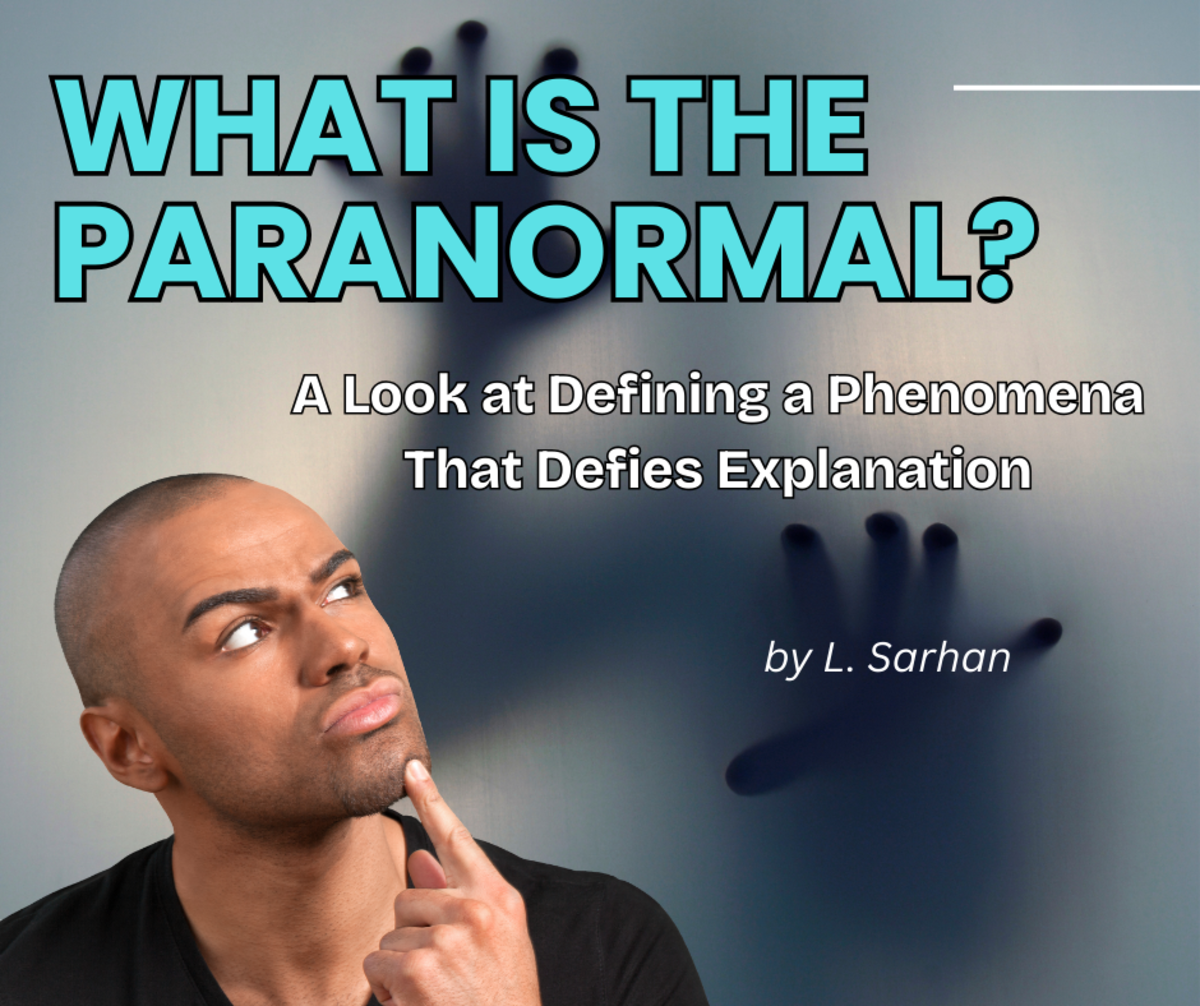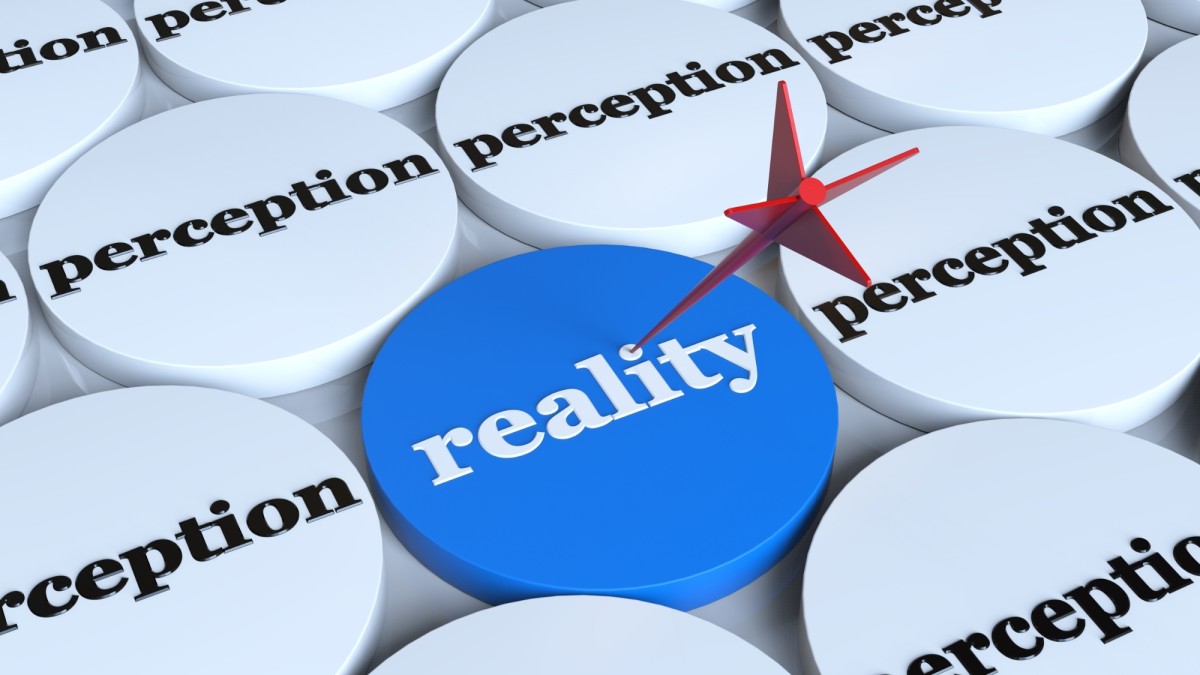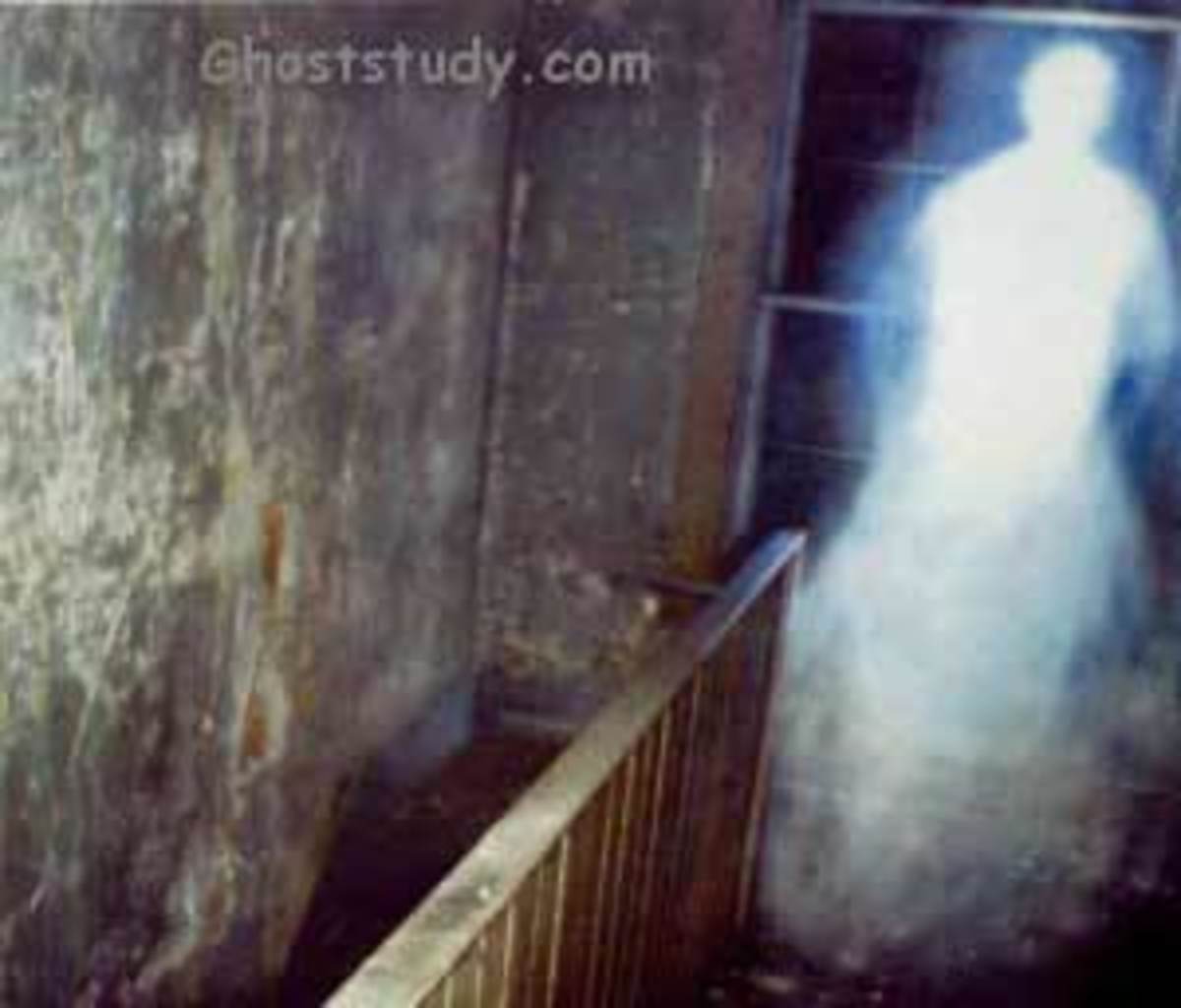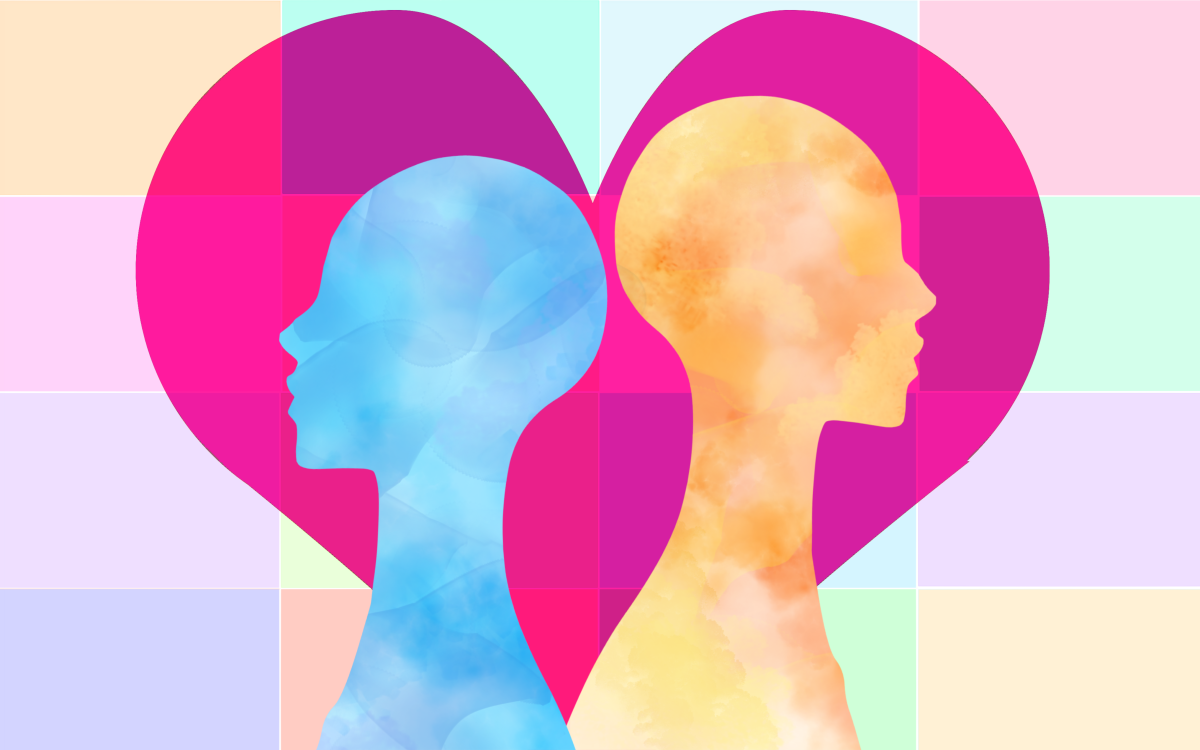Tricks Of The Human Mind (ParaPsychology): Psychological Explanations For Seemingly Paranormal Events
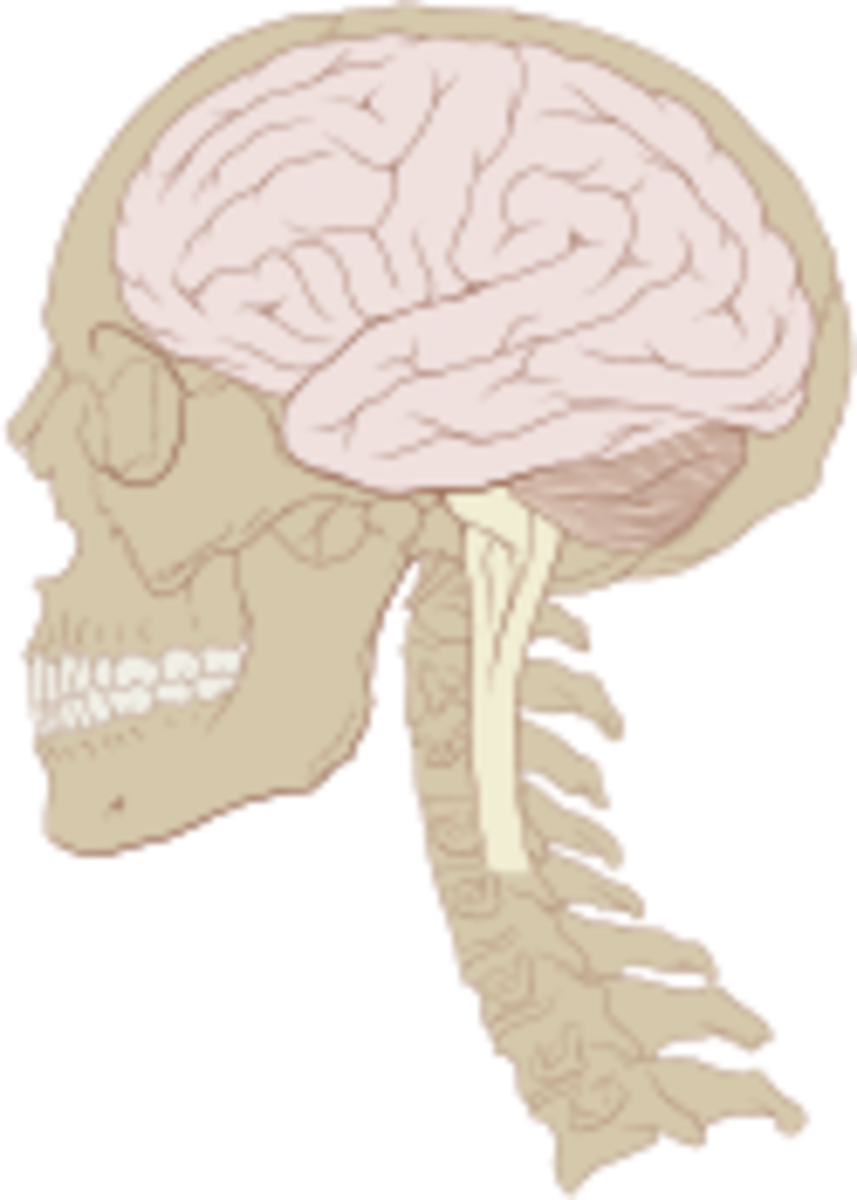
ParaPsychology - Tricks Of The Mind
Although certain paranormal activities are a confirmed and undoubted reality (e.g. Bermuda triangle), the fact is that a lot of seemingly paranormal activity can actually be explained in perfectly normal and understandable conventional ways.
I provide the following information not to debunk or to 'explain away' the alleged presence of ghosts, ESP, remote viewing or UFO's/aliens but, rather, in order to help people understand better how to establish a difference between parapsychology/parascience and actual paranormal phenomena.
Belief and Expectation
A person's expectations can inaccurately enhance their perception of events. Think about that statement for a minute. Due to this fact, we believe it is important for a subject or researcher to be a real skeptic - neither a believer or a disbeliever.
Whilst it is important to approach an investigation with relevant theories and valuable background knowledge, approaching the field with strong beliefs swayed either one way or the other leaves the researcher open to the danger of misinterpreting events according to his/her individual set beliefs.
It is just as damaging to over-explain events as having conventional explanations as it is to blindly believe that a phenomenon must be a result of a paranormal cause.
Simple Mis-perceptions
Due to some of the unusual circumstances that researchers find themselves in, (e.g. it is unusual for anyone to sit motionless in the dark attending to any slight sound or feeling during their normal daily life) it can be easy to mis-perceive what are usually benign and common events.
An often reported phenomenon is the sense of ghostly fingers running through a person's hair. Whilst we must remain open to the possibility that this is indeed what is happening, we must also bear in mind that a common physiological process could also be at play.
It has been noted on numerous occasions that a researcher has sat down in a darkened room and removed an item of headgear (e.g. a baseball cap or woolly hat) to make themselves more comfortable.
Human hairs actually have touch receptors associated with them and these are stimulated when the hair is bent. When the hat is removed, the hair, which has been bent over against the head, gradually resumes its normal shape.
This stimulates the touch receptors, and produces a sensation which can easily be misinterpreted as invisible ghostly fingers.
Sense of Presence
One of the most commonly reported paranormal phenomena is the sense of presence - the feeling that there may be someone or something in the room that cannot be seen.
This can simply be due to expectation - in an alleged haunted house the researcher or subject expects, and sometimes almost wills, a presence to appear.
Combined with a state of heightened suggestibility - and being aware of the haunted reputation of the building - a sense of presence can be induced quite easily. The beliefs of the subject's mental set can affect his/her behaviour and perceptions.
If the subject believes that he/she will experience paranormal phenomenon, they may unconsciously perceive events according to that belief. These beliefs can cause them to mis-percieve events, even if in reality this appears illogical.
Environmental conditions of quiet and darkness allow the subject to detect faint stimuli that are ordinarily masked - these are interpreted in accord with a person's expectations and fears - in an environment with a reputation for invisible presences the subject's worries may transform innocuous sights, sounds, and feelings into hints of hidden paranormal activity.
As an example, a simple draught through a room has been mis-perceived as a ghost passing through a subject. If the same draught was felt in more innocuous surroundings, it would either not be perceived at all, as an unimportant stimulus, or it would be assumed to have a more conventional cause, such as an open window.
The fact that the draught was felt with no visual stimulus only increases the feeling of unease. An example of these factors influencing perception occurred some years ago during an investigation when a sound subsequently discovered to be a bilge pump at a dock was actually reported as being the "sound of a body being dragged".
Expectation and belief transformed an innocent sound, whilst unusual and outside the subject's previous experience, into something far more fanciful and sinister.
There are also physiological explanations for the experience of a sensed presence. Experiments by Michael Persinger in laboratory situations have shown that individuals with greater than normal metabolic activity in the temporal lobe region of the right hemisphere of the brain are more likely to report encountering invisible beings.
It has been suggested that aspects of a person's own sense of self are generated in this region; when it becomes unusually active, the self-image of the right hemisphere intrudes upon the left hemisphere, which interprets it as the presence of an unseen external entity.
Another physiological cause that has been suggested for producing the sense of presence are extremely low frequency sound waves - or infrasound. Exposure to infrasound has been proven to cause various physiological effects on the human body, including anxiety, shivering, breathlessness, and a feeling of an unseen presence.
If a wave of 18Hz is presented, the human eyeball can start to resonate with the wave, in turn causing a person to experience hallucinations in their peripheral vision.
These sound waves can be produced by electrical equipment, but may also be produced as a result of, for example, wind blowing through a window and down a corridor.
Pareidoloa
Another way that external stimuli can be mis-perceived is a phenomena termed pareidolia. A common example is when we see faces and patterns in the clouds or the moon.
The human brain tries to make sense of the world around it and when presented with a stimulus it will try to match it to something it has encountered before, again with respect to the person's beliefs and expectations (i.e. searches the subconscious).
Sensory Deprivation
Often during ghostly investigations, participants are sitting in conditions of near sensory deprivation, with low light levels and no sound. An effect commonly seen is the autokinetic effect - the mis-perception of movement in a stationary object or source of light.
When light enters the eye the lens focuses the light into an image of the light source, projected onto the retina at the back of the eyeball. This image changes its position on the retina if either the object or the eyeball moves.
Under ordinary conditions, it is easy to tell what sort of movement has occurred. If the eyes are moved, all the images on the retina move, when an object moves, its retinal image changes location relative to the other objects being focused on the retina.
The eye contains two types of photosensitive cells, rods and cones, which convert light energy into signals that are carried to the brain by the optic nerve.
Rods are very light sensitive and give us black and white vision but they produce quite a low-resolution image. Cones, on the other hand, give very high resolution, colour images, but they are not as sensitive to light.
In the middle of the retina is a small dimpled region called the fovea. This contains only cone cells, so in ordinary light we would look straight at an object to produce the best picture. In low lighting, the rod cells are better for imaging, and the largest concentration of these occurs near the outer edge of the eye.
This means that we can see objects in low light better out of the corner of our eyes These cells also give us the best motion detection, so we can see movement best out of the corner of our eyes.
The subject sitting in a darkened room might perceive a small point of light, perhaps from an item of technical investigation equipment. It can be seen more clearly out of the corner of the eye, but no detail can be perceived.
To compensate for this, the subject attempts to look straight at the object to try and resolve it. But when we constantly focus on one point of light, we begin to lose a proper perception of it as the chemical in the cone cells, iodopsin, becomes bleached out.
To try and overcome this, our eyes do what is called saccadic scanning, which basically means our eyes make small rapid movements, of which we are unaware.
This saccadic movement is misinterpreted as movement of the light source, rather than movement of the eye, as there are no other objects visible to relate the movement to.
This is called the autokinetic effect, and differs between individuals - some people see small movements, whereas others see the light source moving up to 8 inches.
So a small stationery point of light has suddenly turned into a moving ball of light - is this a ghost manifestation occurring?
It is important to remember also that, just as when we focus on a point of light in a darkened room the eye needs to keep moving to keep perceiving it, the same is true of the rods and our peripheral vision - we will no longer be able to perceive a stationery object at the periphery of our vision unless we keep moving our eyes.
Ideoretinal Light
This describes the phenomenon of flashes of light or colour that may appear in the field of vision in the absence of sensory stimulation.
They can cover a wide range of optical phenomena, from simple lines and patterns, through so-called "wallpaper patterns", right up to full scenes.
These effects are a form of entoptic phenomena.
Entoptic Phenomena
Entoptic phenomena are sensations produced by the structure of the visual nervous system. They can relate to perception of objects actually within the structure of the eye, a common example being "floaters" - bits of debris floating in the vitreous body of the eye.
The vitreous humour is a jelly like substance that fills the eyeball. As we move our eyes, this jelly "sloshes about" within them, and as a consequence of this movement, and also the fact that the jelly shrinks with age, cells and fibres within the eye can break off.
These cells and fibres cast a shadow on the retina, and as the eyes are moved they can be seen as semi-transparent, irregular lines floating across the vision - hence the name "floaters".
If these cells break off from around the optic nerve, they can form a circular shape with a clear middle, reminiscent of the "orbs" and "lightballs" reported on digital photographic images.
These floating objects can be mis-perceived as external objects, seen as outside the eye rather than within it.
Scheerer's Phenomenon
Light passes through several layers of retinal cells to reach the light-sensitive receptor cells - these layers are nourished by a capillary network of blood vessels.
If a bright, steady light enters the eye (for example a light source in a dark room), it is sometimes possible to see streaking points of light and shimmering webs of light in the field of vision, caused by the blood flow in front of the receptors.
Because the eyes are constantly in motion, either voluntary or saccadic scanning, a sense of motion may be imparted to these entoptic effects.
Awareness of Imagery
Imagery is the phenomenon of visual experiences in the absence of any visual stimulus from the outside world. An example of this is day-dreaming.
If you can try and imagine a white, sandy beach, with clear blue skies, a beautiful blue sea with waves lapping at the shore. You should have been able to produce quite a clear mental image of this scene.
There is some evidence to suggest that we use these sorts of mental images all the time. Think of when you have been driving a car and need to make a decision - should I overtake the car in front?
You will use imagery to construct a mental picture of the consequences - you will not actually stop seeing the road, but your brain has created a mental image.
We are unaware that this is happening - we wouldn't be able to function without it, but we also wouldn't be able to function if we were constantly aware of it. In the scenario of mild sensory deprivation (quiet and dark), it is possible to become aware of this imagery as there is nothing else to focus the conscious attention on.
Because it is something not normally consciously perceived, it is possible to externalise this imagery and interpret it as something occurring external to the body, rather than produced within the mind.
Illusions and Hallucinations
There is a difference between these two phenomena - an illusion is a mistaken perception of an object, there is something to be perceived but it is perceived incorrectly.
A hallucination is a perception-like experience in the absence of any external stimuli. It can be difficult to separate the two - an illusion (a flapping curtain is misperceived as a ghost) can turn into a hallucination (the ghost is heard to speak).
It can also be difficult to separate illusions from ordinary perceptions - we assume we are perceiving the world as it actually is, whereas in reality we perceive it according to our beliefs, expectations and prior experience.
The ideal situation for illusions to occur is again the mild sensory deprivation conditions commonly encountered during the "ghost hunt" - dim lighting, an object that is not clearly viewed and is only seen briefly, an observer with impaired perceptual functioning (tired, excited or both), and observer with a suitable mental set.
If the observer is accompanied by other witnesses, a collective illusion is possible. If the group share a common expectation, for example that a ghost will appear, and the people in the group communicate with each other either during or after the experience, they can unintentionally fine tune their mutual interpretations, and therefore create a closely matched illusory perception.
Auditory Illusions
Human speech consists of a combination of frequencies and rhythms. The sounds of letters - t, k, f, sh, p, s - are combinations of clicks, swishes, hisses, squeaks and a myriad of other noises.
All these sounds exist in the world outside of human speech. Because of this, and the fact that speech is so important to human beings, it is possible to mis-perceive sounds such as the creak of a door, as a human voice.
This phenomenon can be quite marked in a noisy environment, also if the observer is expecting to hear a ghostly voice it is far easier to misinterpret natural sounds as speech.
Perceiving Objects and Events
Assuming an observer has witnessed an event, how sure can we be that it will be reported accurately?
Perception is not just a process that is carried out in the eye, ear, nose etc., the important bit happens in the brain. Most of the information we use in the process of perception is not consciously recognized.
It is also possible to look straight at an object, so an image is formed on the retina, but it isn't actually perceived. Think how many road accidents have occurred where the driver says "I didn't see him".
He might have looked straight at the person he has just run over, but his brain did not perceive it.
This phenomenon is called selective attention - we have to function this way as there is too much information available for us to be aware of it all.
During an ordinary day we can carry out daily tasks such as leaving the house and getting in the car to go to work, without consciously noticing the colour of the path, the make of car, the colour of the front door.
If, however, a large oil stain has appeared on the path we might consciously perceive this, as something has changed from the normal course of events, and also it may be quite important to register this information - the car may have a large oil leak.
We are quite good at recognizing familiar cues - an example would be the "cocktail party" effect - in a large group of people, all of whom are having conversations, these separate conversations are not normally consciously perceived.
However, as soon as someone mentions your name, you immediately become aware of hearing it - it is something quite important to you and is flagged up as such in the brain, and you notice it.
Even when an observer is sitting in a dark and quiet room, they may still be filtering out anything that the brain does not perceive as important. If the observer is then presented with two unusual stimuli, only one may be perceived and not the other.
If both events are perceived, the order in which they occurred may be mis-perceived - if two events happen simultaneously, the event the observer paid the most attention to will be perceived as happening first.
An earlier unattended event may even be recalled as occurring after the attended event. The opposite to this effect is a situation where the brain perceives something that is not actually there.
On being presented with an incomplete object, the brain automatically fills in the missing pieces according to our previous memory and experience. There are many examples available of common optical illusions to illustrate this.
Perceptual Memory
Perceptual memory is unreliable. The human eye can distinguish between thousands of different colours, but studies suggest that we can only distinguish between 17 in memory.
The images in our mind are never as clear as the actual scene, if you imagine a room in your house you can probably picture everything in it and where everything is, but the picture is markedly less detailed than the actual image.
Memory also stores perceptual information in a verbal form, rather than as a picture, so if an observer sees a pink elephant he will retain the words pink and elephant rather than a picture of the actual elephant.
On being asked to recall it, the picture of the elephant would be reconstructed in the mind, and any gaps in the information would unconsciously be filled in.
If the observer has talked to other witnesses, information from them may also be unconsciously incorporated into the image.
By Sparkster
Related Articles
- What Is Hypnosis & How Does It Work?
- What Is NLP (Neuro Linguistic Programming)?
- NLP (Neuro Linguistic Programming): Generating Rapport
- NLP (Neuro Linguistic Programming): Representational Systems
- The Fundamental Law Of Attraction
- Relieve Depression Without Medication
- Mnemonics - Memory Techniques: How To Develop A Super-Power Memory
- What Is Remote Viewing & How Does It Work?
- Social Psychology: Cognitive Dissonance
- Psychological Murder: Inflicted Suicide
- The Sociopath Next Door
© 2012 Marc Hubs

